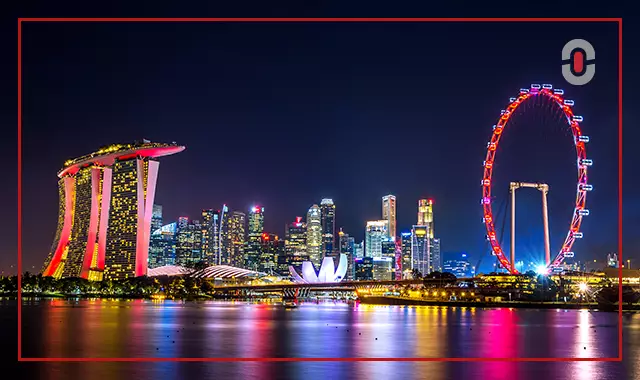AI Overview
| Category | Summary |
| Topic | Avoiding Common Localization Mistakes in Singapore’s Multicultural Market |
| Purpose | To educate businesses on how to navigate Singapore’s diverse cultural and linguistic landscape when localizing content, avoiding common missteps that can harm brand reputation |
| Key Insight | Success in Singaporean localization requires more than language—it demands deep cultural awareness across ethnicity, religion, holidays, language preferences, and even colloquial expressions like Singlish |
| Best Use Case | For marketing, branding, and localization teams preparing campaigns, platforms, or communications tailored for Singaporean audiences |
| Risk Warning | Overlooking cultural sensitivities—such as multilingual needs, religious practices, or ethnic representation—can lead to public backlash, legal issues, or brand disengagement |
| Pro Tip | Involve native consultants early, test across ethnic groups, and adapt visuals, tone, and UX—not just language—to create truly localized content that resonates |
Do you know that the name “Singapore” comes from the Sanskrit words “Simha” (lion) and “Pura” (city), which means “Lion City”? According to the legend, a Sumatran prince named Sang Nila Utama spotted a strange beast that he believed to be a lion when he landed on the island in the 13th century. Inspired by the sighting, he named the place Singapura. However, since there were no lions in Singapore, experts believe the animal he saw was likely a Malayan tiger, which was once native to the region.
Introduction
In an increasingly globalized economy, localization—the process of adapting content to meet the linguistic, cultural, and contextual expectations of a specific market—has become a vital tool for international brands. When entering diverse markets like Singapore, cultural sensitivity becomes not just a courtesy, but a strategic necessity.
Singapore is a multicultural nation with a unique blend of Chinese, Malay, Indian, and Western influences. With four official languages (English, Mandarin, Malay, and Tamil) and a high degree of ethnic and religious diversity, localization in Singapore demands deep cultural awareness. This article explores the key components of culturally sensitive localization in Singapore and outlines common mistakes to avoid.
The Cultural Mosaic of Singapore
Singapore is home to over 5.5 million people, with the majority ethnic Chinese (about 74%), followed by Malays (13%), Indians (9%), and a small but significant Eurasian and expatriate community. English is the language of business, education, and administration, but mother tongues are actively promoted by the government. Cultural practices, festivals, cuisines, and religious beliefs coexist within a carefully balanced ecosystem.
This diversity creates both an opportunity and a challenge for brands trying to communicate effectively. What resonates with one group might alienate another, making it imperative to understand the local cultural landscape before crafting marketing or product content.
Why Cultural Sensitivity Matters
Poorly localized content can result in damaging brand reputation, leading to boycotts, or even legal repercussions. In Singapore, where racial and religious harmony is legally protected under the Maintenance of Religious Harmony Act, cultural insensitivity can carry real-world consequences.
Conversely, culturally sensitive localization builds trust, fosters customer loyalty, and demonstrates respect. Consumers in Singapore are well-educated and globally aware; they appreciate when international brands make a sincere effort to understand their context.
Common Mistakes in Singaporean Localization
1. Overlooking Multilingual Needs
Many companies assume that English-only content is sufficient since it is Singapore’s working language. While English is widely spoken, using localized content in Mandarin, Malay, or Tamil can significantly improve engagement, especially for campaigns targeting family units or the elderly.
Mistake: A mobile banking app launched in English only, ignoring the significant elderly Chinese-speaking population who prefer Mandarin.
Solution: Offer multilingual options and adapt the interface and customer support accordingly. Ensure quality translations, preferably by native speakers who understand cultural nuances.
2. Stereotyping Ethnic Groups
Using outdated or inaccurate cultural stereotypes in advertisements or product packaging is a serious misstep. Singaporeans are sensitive to portrayals that reduce ethnic groups to clichés.
Mistake: A foreign fashion brand used traditional Malay attire in a marketing campaign in a way that implied it was “costume-like” or exotic, prompting backlash for cultural appropriation.
Solution: Engage cultural consultants and local creatives who can represent diverse communities authentically and respectfully.
3. Ignoring Local Holidays and Festivals
Singapore celebrates a variety of cultural and religious holidays: Chinese New Year, Hari Raya Aidilfitri, Deepavali, Christmas, Vesak Day, and more. Failing to acknowledge these occasions—or misrepresenting them—can result in a missed connection or public criticism.
Mistake: An international brand released a generic “Lunar New Year” greeting using inappropriate symbols and colors (e.g., white, associated with mourning in Chinese culture).
Solution: Tailor campaigns to align with specific cultural elements of each holiday. For example, red and gold for Chinese New Year, or oil lamps for Deepavali. Be specific—Singaporeans distinguish between “Chinese New Year” and “Lunar New Year,” and they expect brands to do the same.
4. Literal Translations and Language Faux Pas
Poor translations or literal interpretations often result in confusing or laughable content. Worse, they can be offensive.
Mistake: A Western fast-food chain translated “beef burger” into Malay without realizing that many Malays are Muslim and abstain from beef out of religious practice or personal choice.
Solution: Understand not just linguistic meaning but cultural context. In multicultural Singapore, food is heavily influenced by religious dietary laws (halal, vegetarianism, etc.). Content must be checked for religious appropriateness.
5. Underestimating the Role of Singlish
Singlish—Singaporean English—is a vibrant colloquial form of English enriched with words and syntax from Malay, Hokkien, Tamil, and Cantonese. While it’s not suitable for formal or professional settings, strategic use of Singlish in branding can create a sense of relatability and local flavor.
Mistake: A global brand tried to ban Singlish in its internal communication in Singapore, thinking it was “bad English,” causing a backlash among staff and consumers.
Solution: Respect Singlish as a cultural identity marker. Use it appropriately in casual settings, such as social media or youth-oriented marketing, but avoid overusing it or sounding inauthentic.
6. Disregarding Religious Sensitivities
Religion plays a central role in Singaporean society. Insensitive use of religious symbols or references can provoke serious backlash and violate laws.
Mistake: A fashion brand featured clothing with Hindu deities in provocative styles, prompting complaints and removal from stores.
Solution: Avoid religious imagery unless it’s presented with utmost respect and proper consultation. Always test content with representatives from the respective communities.
Best Practices for Culturally Sensitive Localization
1. Involve Local Experts Early
From translators to cultural consultants, engage locals during the early stages of content creation. Their insights can prevent costly mistakes and help shape campaigns that resonate authentically.
2. Test Content Across Ethnic Groups
Conduct focus groups or usability testing with people from different communities. Ensure that messaging doesn’t inadvertently exclude or offend.
3. Be Inclusive in Visual Representation
Use diverse models and stories that reflect Singapore’s ethnic makeup. Ensure gender, age, and ability diversity is also considered.
4. Stay Updated on Social Norms and Legislation
Singapore’s social norms and legal framework are unique. Stay informed about cultural taboos, current events, and government guidelines related to race and religion.
5. Localize Beyond Language
Localization includes imagery, humor, idioms, references, measurements, and even UX design. Ensure these elements reflect local expectations. For example, avoid content that glorifies large families without acknowledging Singapore’s policies and norms around family planning.
Case Study: A Success Story in Localization
A well-known ride-hailing company successfully localized its app and services in Singapore by offering multilingual interfaces, accepting locally preferred payment methods (like PayNow), running campaigns around major festivals, and ensuring that advertisements featured diverse talent. They also partnered with local influencers from different ethnic backgrounds, creating a strong sense of community engagement.
The result? The company achieved strong market penetration, positive brand perception, and loyal user retention in Singapore’s competitive tech space.
Looking to localize your brand for Singapore’s multicultural market?
At 1-StopAsia, we understand that effective localization goes beyond translation—it’s about cultural connection. With our deep expertise in Asian languages and cultural nuances, we help businesses navigate complex markets like Singapore with confidence and respect.
Let us help you speak to your audience—in their language, and their culture.
Conclusion
Singapore’s cultural complexity offers both challenges and opportunities for global brands. A culturally sensitive approach to localization not only avoids common pitfalls but opens the door to meaningful, long-term engagement with one of Southeast Asia’s most dynamic markets.
Localization in Singapore is not a one-size-fits-all process. It requires humility, research, and a genuine respect for the country’s unique cultural fabric. Done well, it enhances brand equity and builds lasting relationships across Singapore’s multicultural society.
By embracing cultural sensitivity and avoiding common mistakes, businesses can thrive in this sophisticated and diverse marketplace—turning localization into a strategic advantage rather than a compliance checklist.

